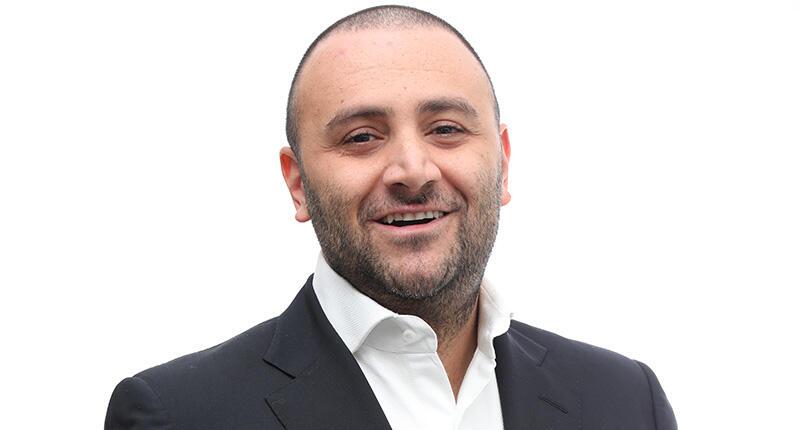Jules Kim: Building Bridges Between Creators and Industry
In this special op-ed, designer Jules Kim calls on big brands to collaborate with independent creators instead of copying their designs.

For those of us who spend our lives bringing unique designs into the world, her words hold a bittersweet truth.
While imitation is often framed as the sincerest form of flattery, it becomes disheartening when originality is stripped of its rightful ownership and tossed into the fast-moving current of consumerism.
Over the past two decades, my work as a designer has allowed me to contribute to the jewelry landscape in meaningful ways.
My creations have graced magazine covers, adorned cultural icons, and influenced trends that have since become standards in the industry.
Yet, as with many independent creators, this visibility often exposes our designs to replication or duplication, sometimes without acknowledgment or collaboration.
Welcome to “dupe” culture.
The Complexities of Creativity in Consumer Markets
Original design plays a vital role in shaping cultural and aesthetic landscapes. When a bold new idea gains traction, it evolves from a subcultural statement into a broader trend.
But in consumer industries driven by profitability, originality often takes a backseat to safe, established products guaranteed to be successes.
Too often, independent creators see their work appropriated by larger brands.

While intellectual property protection exists in theory, it remains difficult to enforce for smaller businesses and individuals.
The process of litigation is prohibitively expensive and time-consuming, and as a result, many of us simply cannot afford to defend the origin of our designs.
However, this article isn’t about drawing battle lines, as I believe in the potential for positive transformation.
The creative industries have an opportunity to approach originality not as a challenge but as an invitation.
A New Vision for Collaboration
When brands encounter a design or concept that resonates, they have a choice—replicate it or engage with its creator.
By choosing the latter, they unlock a wealth of possibilities.
Collaborations, consulting roles, and licensing agreements honor the skill, vision, and labor that go into the creative process.
They also elevate brands in the eyes of increasingly discerning consumers, who value transparency and authenticity.

Designers are not only creators but also partners in innovation.
The ideation process is not a commodity, it is a refined skill shaped by years of experience and experimentation.
When brands embrace this, they gain more than just a product; they gain access to a continuous stream of fresh ideas and insights that can propel their offerings forward.
Respecting the Process
The act of creating is deeply personal.
It is a balance of vulnerability and resilience, pleasure, and pain.
Respecting this process means more than just avoiding replication. It means fostering environments where creators and brands can come together to craft something truly extraordinary.
As creators, we don’t simply want to see our designs populate store shelves; we want to be part of the journey.
We want to help build a system that values originality, uplifts cultural contributions, and ensures that the stories behind each piece are told with integrity.
Toward a More Transparent Future
By forging direct, transparent relationships between brands and designers, the creative industries can redefine what success looks like.
It becomes less about exploiting trends and more about cultivating meaningful partnerships.
This shift benefits everyone—creators receive the recognition and compensation they deserve, brands gain a richer narrative to share with their audiences, and consumers experience products that carry authenticity and intention.

Let us move away from the transactional nature of replication and toward a future rooted in collaboration.
Together, we can maintain and re-establish what creativity truly is—a celebration of passion, skill, and the stories that connect us all.
The Latest

Set in a Tiffany & Co. necklace, it sold for $4.2 million, the highest price and price per carat paid for a Paraíba tourmaline at auction.

The jeweler’s “Deep Freeze” display showcases its iconic jewelry designs frozen in a vintage icebox.

Take luxury gifting to new heights this holiday season with the jeweler’s showstopping 12-carat sphene ring.

How Jewelers of America’s 20 Under 40 are leading to ensure a brighter future for the jewelry industry.

This year's theme is “Unveiling the Depths of the Ocean.”


In its annual report, Pinterest noted an increase in searches for brooches, heirloom jewelry, and ‘80s luxury.

Starting Jan. 1, customers can request the service for opal, peridot, and demantoid garnet.

Roseco’s 704-page catalog showcases new lab-grown diamonds, findings, tools & more—available in print or interactive digital editions.

The 111-year-old retailer celebrated the opening of its new location in Salem, New Hampshire, which is its third store in the state.

The new catalog features its most popular chains as well as new styles.

The filmmaker’s personal F.P. Journe “FFC” prototype was the star of Phillips’ recent record-setting watch auction in New York.

The new location in the Design District pays homage to Miami’s Art Deco heritage and its connection to the ocean.

Inflations, tariffs, and politics—including the government shutdown—were among consumers’ top concerns last month.

“Longtime favorite” presenters, as well as first-time speakers, will lead talks and workshops at the annual event in Tucson next year.

Silas Smith of Meridian Metalworks won the challenge with his pendant that blends Australian and American landscapes.

The sale of the 31.68-carat, sunset-hued stone was part of Sotheby’s first series of events and auctions in Abu Dhabi.

The collection features characters and motifs from Ukrainian folklore, including an enchanted mirror and a magic egg.

MatrixGold 3.11, the newest version of the jewelry design program, offers more flexibility, precision, and creative control.

The pavilion will be part of the 2026 JA New York Spring show, scheduled for March 15 to 17.

Kadet, a 1994 National Jeweler Retailer Hall of Fame inductee, helped grow the family-owned retailer in the Chicago area and beyond.

Billed as the world’s smallest wearable, Lumia Health’s new smart earrings have a health tracker subtly embedded in the back.

Don’t let those with December birthdays feel blue. Help them celebrate their month with blue zircon, turquoise, and tanzanite.

The new pink sapphire version of the piece dances with its wearer in the brand’s “Icons After Dark” holiday campaign.

A choice that’s generated a lot of commentary, Pantone says “Cloud Dancer” marks a fresh start and encourages relaxation and creativity.

The manufacturer’s holiday campaign features a gift guide filled with trending designs and jewelry that can be personalized.

The man was charged with theft, accused of ingesting the necklace while in a jewelry store in Auckland, New Zealand.

The Florida independent expanded its store from 8,000 to 14,000 square feet, fulfilling the vision of its late co-founder, Jim Dunn.





























